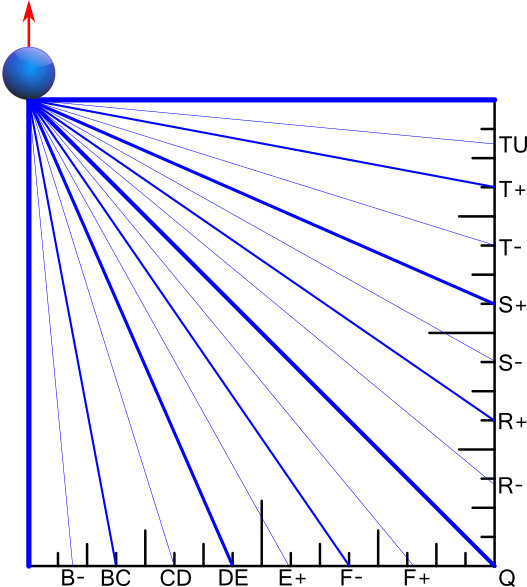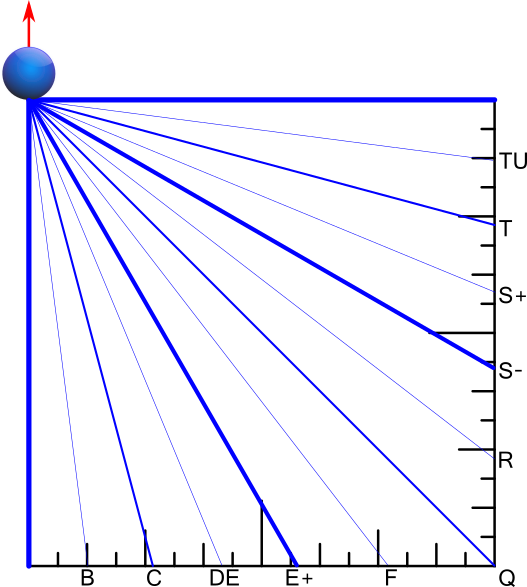Angle Splitting
Angle Splitting is not a pattern but is a common way of finding interior angles or larger angles. It may be at least somewhat helpful at times, so I want to include it as an additional option.
Note: The Angle Detective labels are not really ideal for angle splitting, since the labels were specifically designed to work with the special qualities of squares and rectangles, but we can still make use of them. If you prefer angle splitting to the other Angle Detective methods, I’d recommend renaming your references to better accommodate angle splitting and also adjusting your reference aims to match the split angles rather than ball fractions.
We will be splitting the 90° angle that is created by the intersection of the near and top sides of the Master Square. Standing in Position 1 we draw all dividing lines starting from the top/near corner, continue the lines through the interior of the Master Square, and finally terminate the lines wherever they happen to strike the Master Square’s bottom side or far side.
Splitting By Halves
Splitting By Thirds Then Halves
Dividing the 90° angle into thirds we land on or near the following two shot labels:
30°, 60°
E+, S-
Then bisecting these thirds we land on or near the following shot labels:
15°, 45°, 75°
C, Q, T
Bisecting once more we land on or near the following shot labels:
7.5°, 22.5°, 37.5°, 52.5, 67.5°, 82.5°
B, DE, F, R, S+, TU



